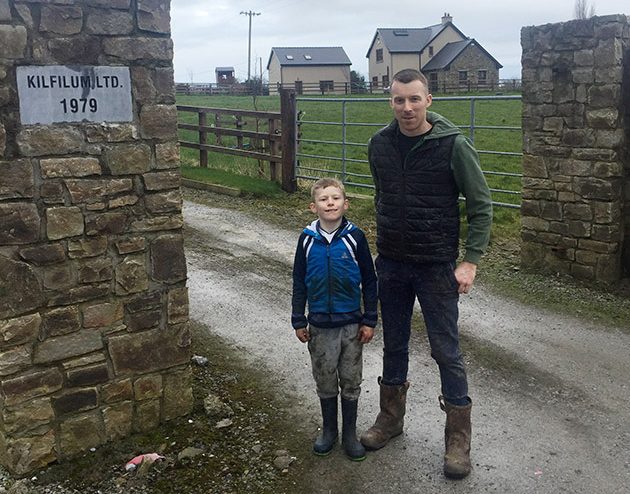
Pig production in Ireland continues to be the third most important sector in terms of agricultural output, after beef and dairy. Most pig production is carried out in integrated pig units.
These comprise of a breeding, rearing and fattening unit. The pigs are born and reared on the same farm. The advantages of this are that diseases are easier to control as there are no ‘bought in’ animals, there is no travel stress on the pigs and management is more efficient.
The importance of feeding the pig herd is to maximise performance in terms of growth rate, feed conversion efficiency and the number of pigs sold per sow per year.
This is key to pig production. Producing healthy pigs and in a welfare friendly system is of prime importance in Irish pig production. EU legislation in relation to pig welfare has led to improvements in this area in recent years.
Pig production has become a far more scientific and technological industry and the concept of it being a dirty, smelly job to be involved in, is one that any modern day pig farmer will tell you is simply not true.
The future of the industry depends on more young people getting involved in this sector, but with the general consensus of it not being an ‘attractive’ industry to be working in, there are concerns going forward.
One pig farmer has called on the need for change in people’s attitudes towards the industry as Clare based Colm Ryan feels more needs to be done at national level to promote pig farming.
Colm has been running his own pig farm for the last 17 years. Located in Spancill Hill, Ennis, the piggery has grown considerably over the years since Colm invested in the business and he sees a need for change in the way that people view an industry that he is passionate about.
“I definitely feel that people’s perception of the industry is way off the mark. I would have guys call in here that wouldn’t have been on a pig farm before and they are just amazed by how clean it is. You could wear your good clothes in and you wouldn’t get a spot of dirt on them,” said Colm.
“But people think the opposite and I do worry about the future as the labour numbers are dropping all the time and there is no one coming into the industry. I think there needs to be more done at a national level to promote what the industry has to offer. Almost every part of the job is computerised, while the pay is also good, something needs to be done to increase people’s awareness.”
As Colm stated, science plays a massive part of the pig industry and especially when it comes to their feed and he revealed that they mill their own feed to ensure that they know exactly what their pigs are eating.
“We find it to be the best process. We buy in the meal from various locations and then mill it ourselves so we know the mixture that the pigs are getting. We find it cost efficient as well as you are basically cutting out the middle man.
Feed is the major cost associated with the growing pig. Efficient feed utilisation is vital while maximising nutritional value and price is very important. Ensuring feed is made readily available to the pig can increase feed intake and maximise feed efficiency.”
Just 47 pig farms now account for 45pc of total pig production in country, according to latest figures from the Department of Agriculture. Based on the 2016 pig census returns, the average active pig herd in Ireland in October 2016 held 872 pigs. This compares with an average herd size of 776 pigs in 2015.
A total of 97% of all pigs were kept in 262 herds of 1,000 and over. There were only 40 herds which kept between 500 and 1000 pigs- accounting for approx. 1.7% of the pig population (28,129 pigs, 40 herds).
“We have 760 sows here and we operate on a loose housing system. The whole unit has been rebuilt over the years and it is now modernised and everything is computerised.
“This is a breeding site, while we have a finishing site in Kerry as well, while we use a number of factories both here and in the North as well.”
Animal welfare is a key element of the business and Colm’s farm known as Kilfilum Ltd is Bord Bia approved, which is key for them to operate an efficient business.
“There is plenty of paperwork to be followed given all the regulations in place, but once you are on top of them then it is not so bad and at the end of the day, it is for the benefit of the industry.”
The pig industry is a small community that operates without any aid at Government level and Colm admits that it is a difficult business to be involved in at times.
“It’s an ongoing battle all the time. Pig prices are determined by the world market, while with Brexit looming, there is more uncertainty in the market.”
There is no doubt that this is a tough business to be involved in, but with men like Colm displaying a passion for the industry then there is light at the end of the tunnel.”
Kilfilum Ltd,
Spancill Hill,
Ennis,
Co Clare
Taken from Irish Tractor & Agri magazine Vol 6 No 2, March/April 2018